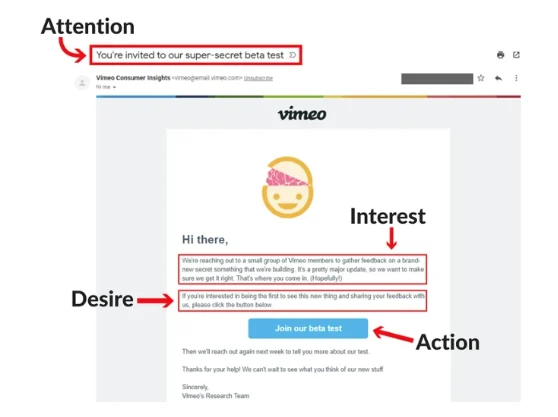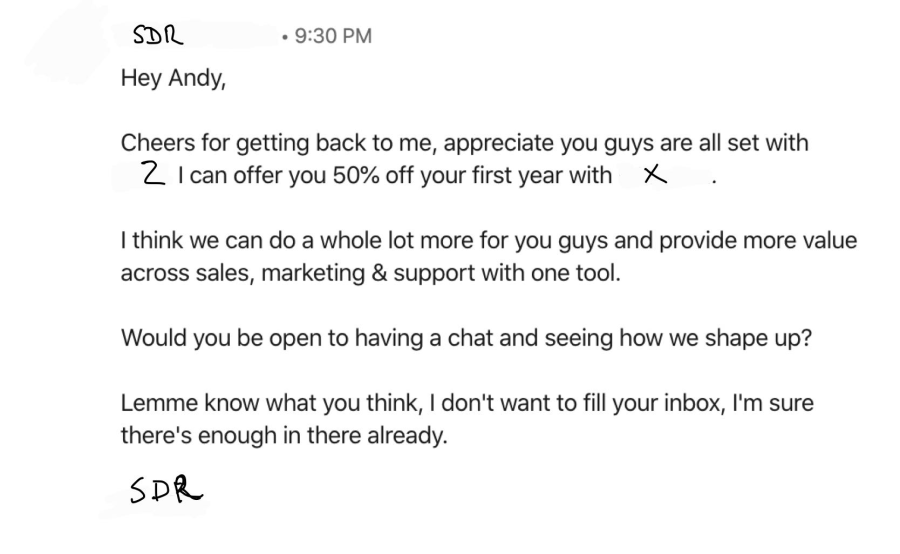It’s like a sudden punch to the gut, isn’t it?
We’ve all been zapped into unchartered territory by COVID-19, and our personal and professional mettle is being put to the test.
For SDRs and marketing teams especially, the old sales playbook is a thing of the past.
The seismic impact of COVID-19 has blurred the lines of normal and introduced a new playing field. Sales must go on. But how?
Ahead, I’ll share 3 powerful principles that SDRs can use to improve outreach and prospecting despite the ongoing pandemic.
Note: Use Leadfeeder’s robust buyer intent data to see which companies are visiting your website and improve outreach. You can try Leadfeeder free for 14 days here.
Pivot with pressure-free follow-ups
Engaging the world as it was a month ago is a recipe for rejection.

In a recent webinar, I worked with our sales team to share winning COVID-19 cold email templates SDRs can use. But, formulas and templates can only get you so far.
Navigating through the fog of this new landscape boils down to developing real empathy, and then conveying it with the content, tone, and cadence of your outreach.
Aggressive sales tactics and pushy sales messages will just repel leads. The shift to softer selling is not optional, in this new environment, it’s a must. This means you should:
Address the elephant in the room. Pretending that nothing is going on will make you appear apathetic, or aloof and disconnected at best.
Listen before you speak. Pay attention to the data. Research your buyer and understand their priorities before you interact.
Limit your asks. Focus on establishing long-term relationships over immediate wins. Share helpful content, insights, and ideas. Ask them to act after they’ve positively responded to your messages.
Keep a positive tone. Addressing the elephant in the room doesn’t mean drawing the dark clouds. Emotion is energy, so keep your tone light and optimistic.
Use a savvy sales cadence. Slower follow up sequences and flexible schedules are key during this crisis. If a prospect needs to postpone, don’t pressure them to reschedule immediately.
Personalize effectively by practicing “granular” empathy
Have you ever felt like a means to an end when a rep reached out to you?
I have.
And I’m guessing you’ve experienced the same thing.
You know you’re just a number on a list, just another deal to be closed. There’s nothing to make you nod your head in agreement, and the interaction is void of any feeling or substance that sparks a connection.
Mounting uncertainty, dwindling budgets, and industry-wide slowdowns have put most decision-makers in a defensive and reactive state of mind.
Apart from the bare-bone essentials, buyers are not in a buying mood. 40% are even vetoing sales meetings due to COVID-19.

Right now, sales teams need to embed empathy into every outbound sales interaction.
They must not only understand but also connect with buyers and go out their way to eliminate anything that signals a buyer is a number on a list.
The groundwork for forging a connection starts with slowing down; imagine yourself in your prospect’s shoes.
Take it further by role-playing their tasks in your head before you interact with them.
Picture your buyer’s industry, their customers, and their top priorities. A short Google search will go a long way in helping you step into their shoes. Search terms like:
“[Buyer’s role] struggles during COVID-19”
“How [Buyers Title] are being affected by COVID-19”
Will reveal the challenges prospects face and how they’re dealing with them.
A Head of HR is probably grappling with the task of supporting hundreds of first-time WFH employees.
A Head of Marketing is likely scrambling to create supportive content to aid customers.
Slowing down to imbue empathy in your outreach puts you light-years ahead of competitors.
You’ll grasp the intimate struggles of your buyer, and learn the best way to present your product as a relevant solution.
Present value instead of pulling back on price
When you’re facing fearful buyers with frozen budgets, dropping prices or dishing out steep discounts is tempting.
But please, don’t jump to price cuts unless they’re absolutely necessary.
In this exchange below featured on our sales pipeline webinar, Andy shows how the sales rep’s fixation on pricing (instead of value) caused him to lose interest:

The interaction was off to a strong start. The rep:
Subtly stroked the ego by describing Andy as a “data-driven marketer”.
Plus, he communicated the benefit of increasing our conversions.
After a brief back-and-forth with the Andy, however, the rep responded with the deal-breaker—an instant 50% discount:

To which Andy responded:

As Andy elaborates, “If you drop your price by 50%, you’re not selling me on the value of your product. You’re selling me on the value of a price.”
Trying to close the deal by dropping the price, the SDR devalued his product. He also failed to understand and address Andy’s biggest concern:
The time and effort needed to integrate the new product into Leadfeeder’s existing tech stack.
The lesson here is to understand the current position your prospect is in. When confronted with an objection, if that rep:
Demonstrated that his product would easily integrate into Leadfeeder’s tech stack.
Stressed that it would be easy to use and learn.
And proved the above points with social proof.
Andy’s objections and concerns would be addressed, and as a result, the rep would’ve stood a winning chance at closing the deal.
Final takeaway: An (unorthodox) way to support empathetic outreach
To help sales reps grasp the brewing challenges that buyers face, I have an unorthodox piece of final advice:
Sit down with your customer support teams and tune into conversations with buyers.
If possible, play the support role and note how buyers:
Are using your product/service during COVID-19.
Are adapting to changes in their industry.
Describe being affected by COVID-19.
This will help you develop raw empathy and glean granular insights that enrich every aspect of your outreach during COVID-19.
Note: Use Leadfeeder’s robust buyer intent data to see which companies are visiting your website and improve outreach. You can try Leadfeeder free for 14 days here.
Now that you're here
Leadfeeder is a tool that shows you companies that visit your website. Leadfeeder generates new leads, offers insight on your customers and can help you increase your marketing ROI.
If you liked this blog post, you'll probably love Leadfeeder, too.
Sign up


![How to Keep Calm & Create A Pipeline During COVID-19 [Webinar Recap]](http://images.ctfassets.net/plii0v5gbc4s/PMKzLjKllGhfTMhotAfbO/433c75d1e9cea0c049b88b911538bef9/coroanvirus-sales-pipeline-header.png?w=686&q=80)




